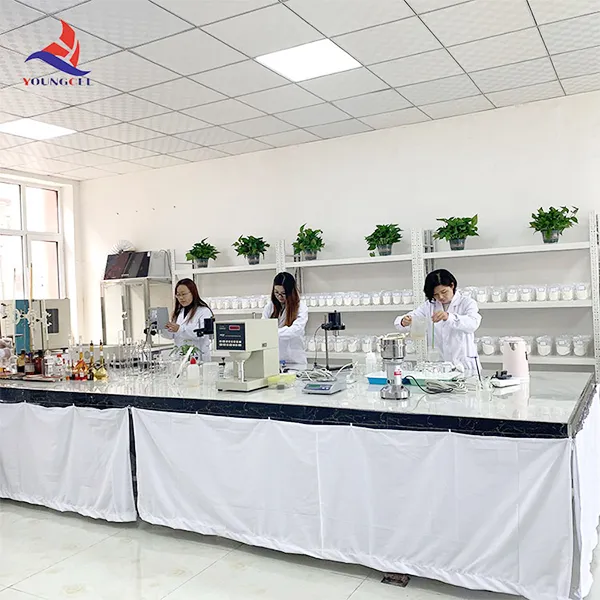The Promise of Liquid Cellulose Innovations in Sustainable Materials
In recent years, the quest for sustainable materials has gained increasing urgency, driven by the need to mitigate the impact of plastic waste and the depletion of fossil resources. One innovative solution that has emerged in the realm of green chemistry is liquid cellulose, a versatile material derived from one of the most abundant organic polymers on Earth—cellulose. This article explores the potential of liquid cellulose as a sustainable alternative in various applications, its production processes, and the challenges that lie ahead.
Understanding Cellulose
Cellulose is a natural polymer made of glucose units and is found in the cell walls of plants, trees, and some algae. As a primary component of biomass, cellulose accounts for about 40% of the organic matter produced by photosynthesis. Traditionally, cellulose has been used to produce paper, textiles, and various bioplastics. However, the transition from solid to liquid cellulose opens up new avenues for innovation.
The Production of Liquid Cellulose
Liquid cellulose is produced by dissolving cellulose in a suitable solvent, which often requires advanced processing techniques. Common solvents include ionic liquids and aqueous solutions that can effectively break down the crystalline structure of cellulose while preserving its biodegradable properties. This transformation into a liquid state allows for improved processing capabilities, enabling the material to be cast into films, fibers, or molded into more complex shapes.
One exciting aspect of liquid cellulose production is its compatibility with other bio-based materials. By blending liquid cellulose with other natural polymers, researchers can create composite materials that exhibit enhanced properties—such as increased strength, flexibility, and biodegradability. This capability positions liquid cellulose as a frontrunner in the development of new bioplastics and sustainable packaging solutions.
Applications of Liquid Cellulose
liquid cellulos

The versatility of liquid cellulose paves the way for a wide range of applications
. In the textile industry, liquid cellulose can be spun into filament fibers that can replace synthetic fibers made from petroleum. These biobased fibers not only reduce reliance on fossil fuels but also enhance the biodegradability of clothing, aligning with the growing trend of sustainable fashion.Additionally, liquid cellulose has promising applications in the food industry. As a thickening or gelling agent, it can be utilized in various food products, contributing to texture improvement while serving as a sustainable alternative to chemically synthesized additives.
Moreover, in the construction sector, liquid cellulose can be used to produce biocomposites that combine cellulose with other materials. These composites can be employed in insulating panels or eco-friendly building materials, offering better thermal and acoustic insulation while reducing the carbon footprint of construction projects.
Challenges Ahead
Despite its significant potential, several challenges hinder the widespread adoption of liquid cellulose. The production process can be energy-intensive and expensive, particularly when using certain solvents. Moreover, research is still ongoing to further understand the properties and behavior of liquid cellulose in various applications to optimize its performance and longevity.
Regulatory frameworks also need development to ensure that products made from liquid cellulose meet industry standards and consumer safety requirements. This includes addressing environmental impacts related to solvent use and the overall lifecycle assessments of products.
Conclusion
Liquid cellulose stands at the intersection of innovation and sustainability, offering promising solutions to some of the pressing environmental challenges we face today. With ongoing research and advancements in production technologies, it has the potential to transform various industries—from textiles to food and construction—by providing eco-friendly alternatives that reduce our dependence on fossil fuels and mitigate plastic pollution. As we continue to explore the capabilities of liquid cellulose, the transition towards a circular economy could become a tangible reality, fostering a sustainable future for generations to come.
-
A Comprehensive Guide to Methyl Ethyl Hydroxyethyl Cellulose: Applications and Industry InsightsNewsNov.24,2025
-
Understanding Methyl 2 Hydroxyethyl Cellulose: Uses, Benefits & Industry InsightsNewsNov.24,2025
-
Hydroxyethyl Methyl Cellulose HEMC: Industrial Uses, Benefits & Future TrendsNewsNov.23,2025
-
HEMC Cellulose: Versatile & Sustainable Industrial Polymer | YoungcelNewsNov.23,2025
-
Methyl Hydroxyethyl Cellulose: Versatile Building Block for Industry & SustainabilityNewsNov.23,2025
-
CAS 9032 42 2: Understanding Polyvinyl Alcohol's Impact on Industry & SustainabilityNewsNov.22,2025




